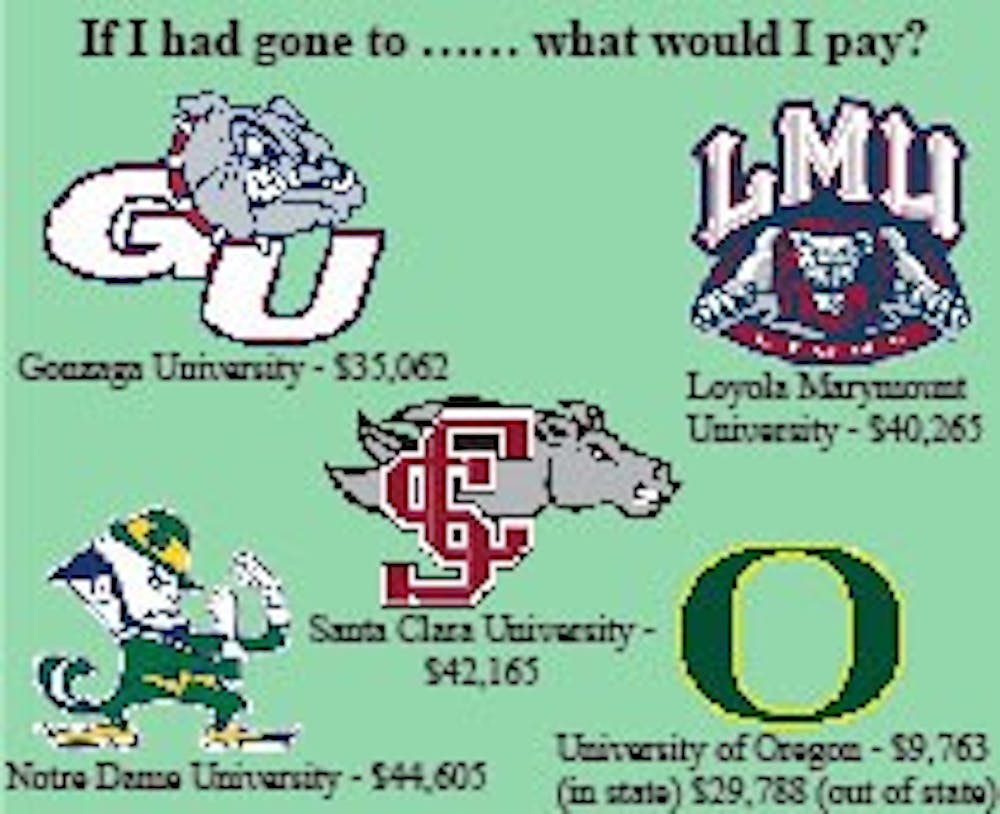Maggie Smet |
$1,650 could buy you 48 sets of purple scrubs from the UP bookstore. Or 551 Taco Bell A.M. Crunchwraps. Or 23 Fjellse single beds from Ikea. Or 17 years of Netflix streaming.
Or you could pay the difference in tuition at UP next year.
Tuition is going up by $1,650 next year, from $36,700 for the 2013-2014 school year to $38,350. Room and Board rates for residence halls and dining plans are also going up, on average by 4 percent. A double or triple room on meal plan two will cost you around $434 more than last year, going up from $10,494 to $11,202 while a single room with meal plan one will set you back $12,122, $478 more than last year.
Since the 2010-2011 school year, tuition has gone up by $6,160 - that’s a 19 percent increase, at an average of $1,540 a year.
When it comes to figuring out how much tuition is going to cost for the upcoming year, Vice President for Financial Affairs Alan Timmins builds the budget for the upcoming year, and proposes a raise in tuition according to rising costs. Some of the biggest costs for the University, according to Timmins, include employee healthcare, technology and personnel costs.
Enclosed with a March letter sent to students returning next year from Fr. President Bill Beauchamp, was a comparison between the tuition costs of other institutions, such as other West Coast Conference, Holy Cross and Northwest private schools.
“On the cost side, we’re comparable (to these schools). On the value side, we provide an extraordinary value for the cost.” Timmins said.
For junior Becca Mion, the thought of a tuition increase causes a lot of anxiety. As a student, she is only able to work 20 hours a week at the Bauccio Commons, on top of her weekend job at a non-profit, Sierra Service Project.
“For someone who can only work 20 hours a week (on campus), and even that’s a lot with schoolwork, it’s a lot of money.” Mion said.
Although tuition has consistently been going up, Timmins directs students to consider the role financial aid plays in offsetting the cost of tuition. When combining the amount of financial aid a student receives, on average, the average net cost of tuition, according to Timmins, is going up by about 1 percent.
“Financial aid has gone up faster than tuition has gone up,” Timmins said.
Mion wonders why the University doesn’t freeze tuition, so that when students come in as freshmen, their tuition costs are set for their four years on The Bluff.
According to Timmins, however, institutions that follow that model add up to 16 percent to the base freshman year tuition to account for changes in costs over four years. He believes that the year to year budget model is more effective, and ultimately less costly to students.
Some students are annoyed by the raise, in light of everyday frustrations they face on The Bluff.
“I’m frustrated to be paying more money, especially if it’s going towards tech, until they fix the internet problems on campus. I couldn’t even print in the library the other day because I couldn’t get on my e-mail.” said sophomore Talbot Andrews
Sophomore Hannah Thorson understands the raise, but is frustrated when she looks back on her decision to come to UP.
“I think the increase, it makes sense, but when I decided to come to this school, paying a certain amount was definitely a contributing factor as to why I chose this university,” she said.








